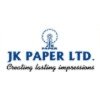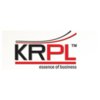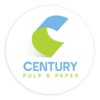Filter interviews by
Khanna Paper Mills Senior Engineer Interview Questions and Answers
Khanna Paper Mills Senior Engineer Interview Experiences
2 interviews found

(2 Questions)
- Q1. About PLC and DCS
- Q2. How to connect PLC with workstation and how to add GSD files in simatic manager.
- Ans.
PLC can be connected to a workstation using Ethernet or serial communication. GSD files can be added in Simatic Manager for device configuration.
Connect PLC to workstation using Ethernet or serial communication
Open Simatic Manager and go to the hardware configuration
Right-click on the device and select 'Insert New Object'
Choose 'GSD file' and browse to select the GSD file for the device
Save the configuration and downlo...
(1 Question)
- Q1. Salary bargaining
Skills evaluated in this interview
I applied via Referral and was interviewed in Mar 2021. There were 3 interview rounds.
Interview Questionnaire
2 Questions
- Q1. Normally related to your field,
- Q2. About your self
Interview Preparation Tips
Top trending discussions






Interview questions from similar companies

I applied via Naukri.com and was interviewed in Feb 2021. There was 1 interview round.
Interview Questionnaire
1 Question
- Q1. About yourself, Technical questions from motor , breaking
Interview Preparation Tips

I appeared for an interview in Aug 2023.
(4 Questions)
- Q1. Tell about your self.
- Q2. Family Background
- Q3. Current job discussion
- Q4. Some Technical questions
(5 Questions)
- Q1. About your self
- Q2. What is your job and mechanical engineering knowledge
- Q3. Knowledge about paper mill
- Q4. What is pulp mill
- Ans.
A pulp mill is a manufacturing facility that converts wood chips or other plant fiber source into a thick fiberboard which can be used for papermaking or other purposes.
Pulp mills use chemical and mechanical processes to break down the wood fibers and remove impurities.
The resulting pulp can be used to make paper, cardboard, textiles, and other products.
Pulp mills can be categorized as either kraft or sulfite mills, de...
- Q5. Do you know about paper machine.
- Ans.
A paper machine is a complex industrial machine used to produce paper from wood pulp.
Paper machines consist of various sections such as forming, pressing, drying, and finishing
They can produce different types of paper products like newsprint, tissue paper, and cardboard
The process involves mixing wood pulp with water, forming a sheet, pressing out excess water, and drying the sheet
Interview Preparation Tips

(2 Questions)
- Q1. Kaun si post Khali hai
- Q2. Junior engineer
(2 Questions)
- Q1. Bus suvidha hai
- Q2. Permanent job hoti hai
Interview Preparation Tips

I applied via Recruitment Consulltant and was interviewed in May 2022. There were 2 interview rounds.

(2 Questions)
- Q1. I Retired BGPPL Kamalapuram Warangal telangana please ask Turbine and Boilers
- Ans. Turbine was energy producing the Boiler is steem producing
- Q2. Any questins are you like in about 2 projects
Interview Preparation Tips

I appeared for an interview in Apr 2025, where I was asked the following questions.
- Q1. Type of Bearings?
- Ans.
Bearings are mechanical components that reduce friction between moving parts, enhancing efficiency and performance.
Ball Bearings: Commonly used in bicycles and machinery for smooth rotation.
Roller Bearings: Used in heavy machinery to support heavy loads, like in construction equipment.
Thrust Bearings: Designed to handle axial loads, often found in automotive applications.
Magnetic Bearings: Used in high-speed applicatio...
- Q2. How to purchase a pump?
- Ans.
Purchasing a pump involves assessing needs, selecting specifications, and evaluating suppliers for quality and cost.
Identify the application: Determine the purpose of the pump, such as water transfer, chemical processing, or HVAC systems.
Select pump type: Choose between centrifugal, positive displacement, or submersible pumps based on the application.
Determine flow rate and head: Calculate the required flow rate (GPM o...
- Q3. Function of mechanical engineer?
- Ans.
Mechanical engineers design, analyze, and manufacture mechanical systems, ensuring functionality and efficiency across various industries.
Designing mechanical systems: Creating blueprints for machines like engines or HVAC systems.
Analyzing performance: Using simulations to test how a product will perform under various conditions.
Manufacturing processes: Overseeing the production of mechanical components, ensuring quali...

I applied via Naukri.com and was interviewed in Sep 2023. There were 3 interview rounds.
Basic of engineering
(1 Question)
- Q1. Based on experience
(1 Question)
- Q1. Salary discussion

(2 Questions)
- Q1. Introduce yourself
- Q2. About experience
Interview Preparation Tips
Please don't try to join

I appeared for an interview in Oct 2024, where I was asked the following questions.
- Q1. Tell us about yourself
- Q2. Why do you want to work for us?
Khanna Paper Mills Interview FAQs
Tell us how to improve this page.
Khanna Paper Mills Interviews By Designations
- Khanna Paper Mills Senior Engineer Interview Questions
- Khanna Paper Mills Purchase Executive Interview Questions
- Khanna Paper Mills Senior Manager-HR Interview Questions
- Khanna Paper Mills Plant Maintenance Interview Questions
- Khanna Paper Mills Assistant Manager Logistics Interview Questions
- Khanna Paper Mills Assistant Manager Electrical Maintenance Interview Questions
- Khanna Paper Mills Warehouse Incharge Interview Questions
- Khanna Paper Mills Assistant Manager Taxation Interview Questions
- Show more
Interview Questions for Popular Designations
Overall Interview Experience Rating
based on 1 interview experience
Interview Questions from Similar Companies
Khanna Paper Mills Senior Engineer Reviews and Ratings
based on 3 reviews
Rating in categories
|
Assistant Manager
40
salaries
| ₹6 L/yr - ₹11.5 L/yr |
|
Associate
31
salaries
| ₹2.2 L/yr - ₹5.2 L/yr |
|
Senior Associate
28
salaries
| ₹3.8 L/yr - ₹7.1 L/yr |
|
Deputy Manager
28
salaries
| ₹9 L/yr - ₹14 L/yr |
|
Senior Engineer
22
salaries
| ₹5.1 L/yr - ₹9 L/yr |

JK Paper

Emami Paper Mills

Century Pulp & Paper

Parason Machinery
- Home >
- Interviews >
- Khanna Paper Mills Interview Questions













